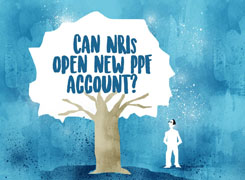Ramalingam Kalirajan |10925 Answers |Ask -Follow
Mutual Funds, Financial Planning Expert - Answered on May 17, 2024
He has an MBA in finance from the University of Madras and is a certified financial planner.
He is the director and chief financial planner at Holistic Investment, a Chennai-based firm that offers financial planning and wealth management advice.... more

I have only 3 years left for my job and planning to quit in Dec24.I have no pension and my PF and Gratuity will amount to Rs.30lacs.Let me know how the investment plan where I can get atleast 20000 per month
Your proactive planning for retirement with a lump sum of Rs. 30 lakhs from PF and Gratuity demonstrates foresight and commitment. Let's design an investment plan focused on generating a monthly income of at least Rs. 20,000, ensuring financial stability during your post-employment phase.
Understanding Your Financial Situation
Congratulations on your impending retirement! It's commendable that you're taking steps to secure your financial future despite not having a pension. Your PF and Gratuity form a solid foundation for building your retirement corpus.
Assessing Income Needs and Investment Horizon
Generating a monthly income of Rs. 20,000 requires a well-thought-out investment strategy tailored to your financial goals and risk tolerance. With a three-year investment horizon until retirement, prioritizing stability and consistent income generation is key.
Leveraging Systematic Withdrawal Plans (SWP)
Integrating SWP into your investment plan can provide a reliable income stream post-retirement. SWP allows you to systematically withdraw a predetermined amount from your mutual fund investments at regular intervals, ensuring a steady cash flow.
Allocating Your Retirement Corpus
Fixed Income Instruments: Allocate a significant portion of your corpus to fixed income instruments such as Senior Citizen Savings Scheme (SCSS), Post Office Monthly Income Scheme (POMIS), or fixed deposits (FDs) to provide stability and regular income.
Debt Mutual Funds: Consider investing a portion of your corpus in debt mutual funds with SWP facilities. These funds offer potential for higher returns compared to traditional fixed income instruments while maintaining a conservative risk profile.
Balanced Funds: Explore balanced funds that offer a mix of equity and debt investments. These funds provide growth potential along with regular income distributions, suitable for retirees seeking a balanced approach.
Regular Monitoring and Adjustments
Regularly review the performance of your investment portfolio and make necessary adjustments based on market conditions and your evolving financial needs. Rebalancing the portfolio periodically ensures it remains aligned with your retirement income goals.
Conclusion
By leveraging SWP alongside a diversified portfolio of fixed income instruments, debt mutual funds, and balanced funds, you can achieve your goal of generating a monthly income of Rs. 20,000 post-retirement. Prioritize stability, consistency, and regular monitoring to ensure a comfortable and financially secure retirement.
Best Regards,
K. Ramalingam, MBA, CFP,
Chief Financial Planner,
www.holisticinvestment.in
You may like to see similar questions and answers below
Ramalingam Kalirajan |10925 Answers |Ask -Follow
Mutual Funds, Financial Planning Expert - Answered on Apr 17, 2024
Ramalingam Kalirajan |10925 Answers |Ask -Follow
Mutual Funds, Financial Planning Expert - Answered on Aug 22, 2024
Ramalingam Kalirajan |10925 Answers |Ask -Follow
Mutual Funds, Financial Planning Expert - Answered on Jul 03, 2024
Ramalingam Kalirajan |10925 Answers |Ask -Follow
Mutual Funds, Financial Planning Expert - Answered on Jul 17, 2024
Reetika Sharma |459 Answers |Ask -Follow
Financial Planner, MF and Insurance Expert - Answered on Sep 18, 2025
Reetika Sharma |459 Answers |Ask -Follow
Financial Planner, MF and Insurance Expert - Answered on Dec 24, 2025
Reetika Sharma |459 Answers |Ask -Follow
Financial Planner, MF and Insurance Expert - Answered on Dec 24, 2025
Reetika Sharma |459 Answers |Ask -Follow
Financial Planner, MF and Insurance Expert - Answered on Dec 24, 2025
Reetika Sharma |459 Answers |Ask -Follow
Financial Planner, MF and Insurance Expert - Answered on Dec 24, 2025
Reetika Sharma |459 Answers |Ask -Follow
Financial Planner, MF and Insurance Expert - Answered on Dec 24, 2025
Reetika Sharma |459 Answers |Ask -Follow
Financial Planner, MF and Insurance Expert - Answered on Dec 24, 2025
Reetika Sharma |459 Answers |Ask -Follow
Financial Planner, MF and Insurance Expert - Answered on Dec 24, 2025
Reetika Sharma |459 Answers |Ask -Follow
Financial Planner, MF and Insurance Expert - Answered on Dec 24, 2025
Reetika Sharma |459 Answers |Ask -Follow
Financial Planner, MF and Insurance Expert - Answered on Dec 24, 2025
Reetika Sharma |459 Answers |Ask -Follow
Financial Planner, MF and Insurance Expert - Answered on Dec 24, 2025






















